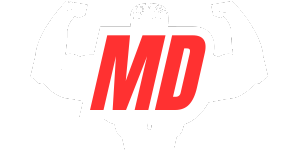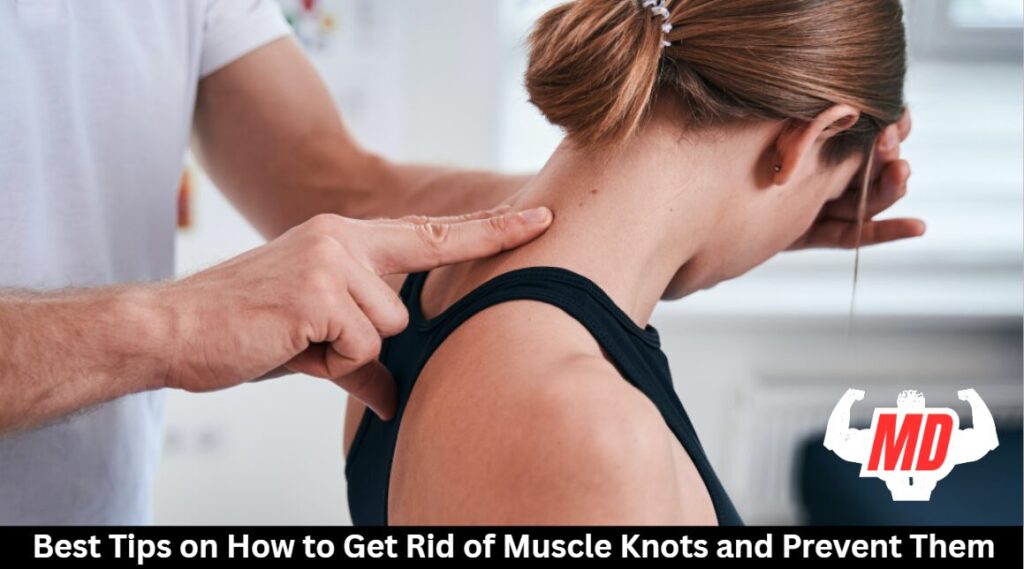Use foam rollers or massage balls to massage the knots out of your muscles for 30 to 60 seconds at a time. Stretch every day, focusing on tight areas for 30 seconds at a time. Drink at least eight glasses of water and eat anti-inflammatory foods like berries and turmeric to stay hydrated.
Make sure your workstation is set up correctly for your body and take breaks every 30 minutes to move around. If you use these techniques regularly, your muscles will react differently to stressors in your daily life.
What Muscle Knots Are and Why They Happen
Tension builds up in your muscles without you knowing it, and eventually, it turns into what we call “muscle knots.” These knots, which are also called myofascial trigger points, are spots where muscle fibers have gotten stuck in a contracted state, making painful lumps that you can usually feel under your skin.
Your daily habits have a big effect on how muscle knots form. Bad posture makes some muscles work harder than they should, and doing the same thing over and over again hurts tissues that are already overworked.
Stress makes the problem worse by making all of your muscles tense up more. Even being dehydrated can make things worse by making it harder for your muscles to get rid of metabolic waste.
Understanding these patterns is the first step toward preventing injuries. To keep these painful trigger points from getting worse, you should regularly correct your posture, take breaks to move around, and learn how to deal with stress.

How to Do Self-Massage to Loosen Tight Trigger Points
You don’t have to wait for professional help to get rid of a stubborn muscle knot. Massage balls, foam rollers, and trigger point massage sticks are all examples of self-massage tools that can work well on these sore spots. For best results, press down on the knot with moderate pressure for 30 to 60 seconds, or until you feel the muscles start to relax.
Foam rolling works better for larger muscle groups, while thumbs or massage balls work better for more precise trigger point therapy. After you let go of the knot, use gentle stretching to keep your new range of motion.
When you give yourself a massage, remember to breathe deeply to help your body relax through any pain. Start with shorter sessions and slowly make them longer as your muscles get used to it.

Stretching Routines That Work on Common Knot Areas
When trying to get rid of muscle knots that won’t go away, a good stretching routine can make all the difference. Focus on your upper back, shoulders, and neck, where knots often form. To make these problem areas more flexible, do mobility drills every day, like thoracic rotations and cat-cow stretches.
To get rid of pain right away, hold each stretch for 30 to 60 seconds and take deep breaths to help you relax. Don’t forget to drink enough water while you stretch. Muscles that are dehydrated are more likely to get tight and knotty.
For muscles to recover well, they need to be consistent. Five minutes of targeted stretching every morning and night can help a lot with knot formation. Do stretches when your muscles are warm, like after a hot shower or light activity, for the best results.

Strategies for Muscle Recovery
Getting enough water and food is essential for avoiding muscle knots and speeding up recovery. Your muscles are more likely to cramp and make painful knots when you’re dehydrated. Try to drink at least eight glasses of water every day, especially before and after workouts, to help your body recover.
Adding foods that fight inflammation, like fatty fish, berries, and turmeric, can help relax your muscles naturally. These nutrients help blood flow, which helps oxygen and nutrients get to tight muscles more easily. This better blood flow makes deep tissue massage and strengthening exercises work better by helping to get rid of metabolic waste products in muscle tissue.
Magnesium-rich foods like leafy greens, nuts, and seeds can help relax your muscles and keep you from getting tense all the time.
Changes to Your Posture and Movements to Avoid Future Knots
Many muscle knots form because of bad daily movement patterns and bad workspace setups that put stress on your body over time. To avoid getting tense again, change your desk so that your screen is at eye level and your arms are at a comfortable 90-degree angle. Buy a chair that supports the natural curve of your lower back.
Every 30 minutes, take a break to move around. Stand, stretch, and walk for a short time to relieve muscle tension before it builds up. When you start to feel tightness, use heat therapy right away to get more blood to the area.
Regular massage therapy, whether done by a professional or by yourself, keeps your muscles flexible and stops small knots from turning into bigger problems. To avoid problems, you need to pay attention to how you move and position your body all day long.
Frequently Asked Questions
Can stress make your muscles knot up in strange places, like your jaw or feet?
Yes, stress can make your jaw (temporomandibular joint) and feet tense up. When you’re anxious, you might clench your jaw or tense your feet without even realizing it.
Do muscle relaxant drugs really get rid of knots that won’t go away?
Muscle relaxants might help with pain for a short time, but they don’t get rid of knots completely. They work best when used with physical therapies like stretching and massage. If you have persistent knots, you need more than just medication to get rid of them.
What happens to muscle knots when the weather changes?
When the barometric pressure drops or the temperature drops, it can make your muscle knots worse. When it’s cold and damp, your muscles will tighten up to keep heat in, which will make the pain and stiffness worse.
Can a lack of certain vitamins cause muscle knots that last a long time?
Yes, not getting enough vitamins D, B12, and magnesium can make muscle knots last longer. When you don’t get enough of these nutrients that are important for muscle health and recovery, your muscles will work less well and be more tense.
Are muscle knots caused by certain genes or traits that run in families?
Your genetics, like collagen structure, can increase your risk of muscle knots, but parents don’t mainly pass these traits down. Your lifestyle and how you handle stress have a bigger effect on how knots form than your genes do.



